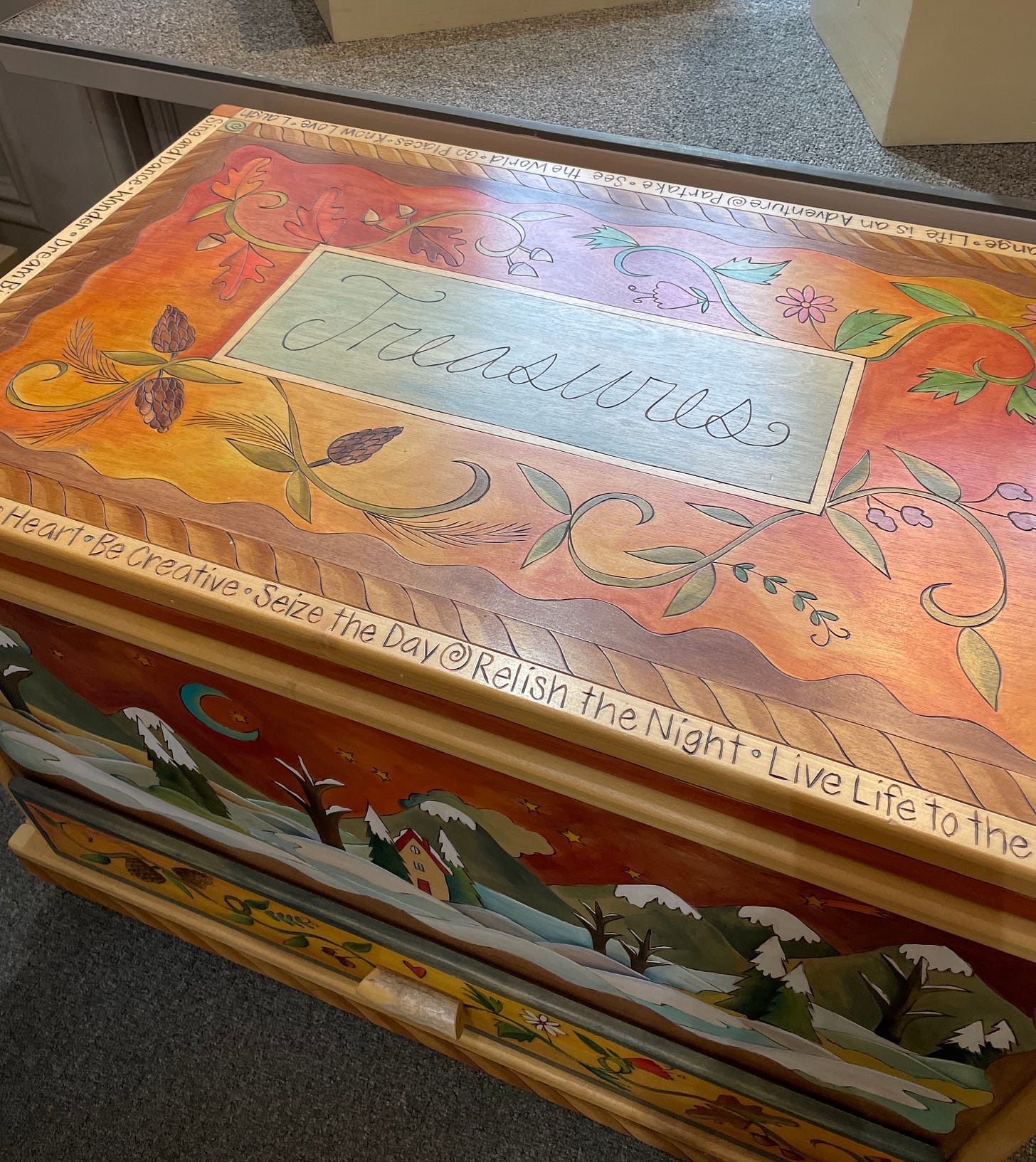Little Shops with Big Heart
In our online shopping world, the unique products of bricks-and-mortar shopkeepers struggle to get attention
It’s kind of a miracle that hyperlocal shops can survive. The lucky ones employ every marketing tool at their disposal, both online and offline, to keep their customers buying. (Photo: The Velvet Chaise)
When creating your personal private space, you have many different options to find the pieces and furnishings you love. That is the beauty of our world marketplace. But I advise you to start and finish with the small independent retailer and I’m going to tell you why.
Only YOU can keep the integrity, diversity and artistic value of merchandise alive.
E-commerce has been a high-growth destination for many years now; its share of total retail sales dollars has increased an average of 7.46% every single year since 1995. Meanwhile, this and other factors (from COVID-19 fallout to inflation) has made independent shopkeeping extremely difficult.
Home goods in particular have been hit by the relentless beat of online sales. Only 28% of consumers primarily buy home goods in-store, according to the National Retail Federation. The rest are lured to sites like Wayfair, Etsy and of course Amazon.
There are far too many conversations going like this.
SCENE: TWO SHOPPERS BROWSING TOGETHER
SHOPPER 1: “Oh look how pretty this framed print is!”
SHOPPER 2: “Yes it is. I saw something a little like that on Amazon. Not as unique but it was a great deal.”
SHOPPER 1: (Looks at the price tag) “Wow, $35; that’s kinda high. Think I’ll look around a bit more.”
The continued search would often lead to a shop ending in .com and a lower price (before shipping).
I overheard similar exchanges when my former partner and I had a shop a few years ago. We enjoyed lots of appreciative shoppers, several of whom confessed to us that they came to our shop just to see how we decorated and merchandised. They might buy a card, or a candle, but our larger sales were more sporadic than we had hoped.
My former shop in Laguna Hills, CA had a full-sized she shed in it so that shoppers knew we could help them design and install one in their backyard. We were part of a large multi-vendor marketplace and that helped to draw shoppers. (Photo: The Velvet Chaise)
“It’s too easy for small shops to be lost in the in the shuffle, even when their products are better, more thoughtful, or more ethical,” comments Rieva Lesonsky, a small business expert and president of Small Business Currents. She points to the overwhelming “noise” of everyday life. “They’re bombarded by ads, influencers, Amazon suggestions, store sales and TikTok ‘must-haves,’ ” Lesonsky says.
“Use your purchasing power to help build the kind of world you want to live in.”
In defense of us shoppers who really want to shop local and find high-quality, one-of-a-kind products, and maybe even support a hard-working store owner in the process, it’s not always easy. Lesonsky explains that “the average shopper simply doesn’t know (an) independent shop exists, not because they’re not interested—but because (it’s) not in their feeds, their inboxes, mailboxes or their field of vision.”
A handpainted trunk/blanket chest in a Port Townsend, WA shop (Photo: The Velvet Chaise)
How to Shop Like It’s 2001 (Before Amazon Ruled)
Before Amazon became the shopping juggernaut it is now (roughly 2001, when Jeff Bezos’ company grew from just books to 20 different product categories and finally made a profit), smaller retailers still managed to carry a decent volume of inventory. But it was never easy; earlier they worried about Walmart, which from the mid 1990s on eroded retail traffic from competitors with the lure of its Supercenters and “everyday low prices.”
The world changes and these retailers brought many benefits to shoppers and home decorators; they still do. But it is impossible to replicate or commoditize those elusive items that are not or cannot be mass produced. So in order to keep the sublime finds a part of your shopping experience, you might need to recalibrate how, why and where you shop.
Think about the ways you shop and your purchasing habits. Habits are formed over time and are hard to shift but you can start with your next home redo. Here are some tips:
Amazon and other large online retailers should not be first in your search. They should be third, or fourth.
When you flinch at a “high” price at your favorite shop, consider the hidden costs behind a cheaper product. That could include overseas labor with perhaps really low wages; using unsafe or exploited materials; using plastic instead of wood or other natural material; and high potential to fall apart in a short period of time.
There is more to a product than its price. When you buy strawberries, you look for ripeness; locally sourced; organic growing methods; and price. Sometimes you pay more for that. Is it worth it? Can you afford it? Can you bypass something else to balance it out?
By buying vintage and used, you are reducing the trash cycle
By buying local and supporting a downtown small business you are actually giving your dollars to a cause. In a way, you are an investor in that business. You are giving that store owner the ability to make a living and continue adding beauty to the world.
“Shopping—especially post-COVID—has become a reflection of values for many,” Lesonsky says. “Supporting local businesses, minority-owned brands, sustainable makers, or companies with transparency matters. Use your purchasing power to help build the kind of world you want to live in.”




